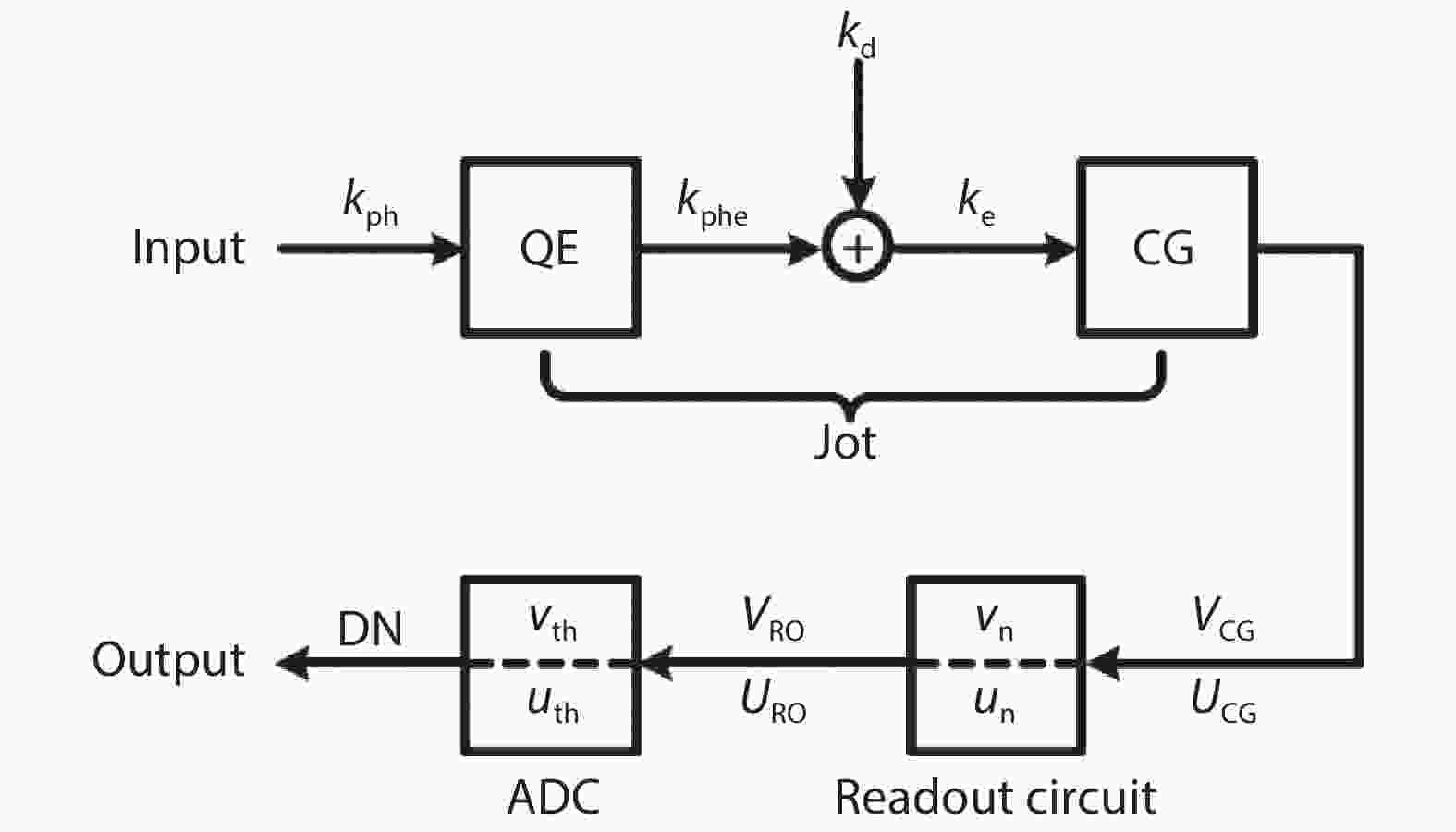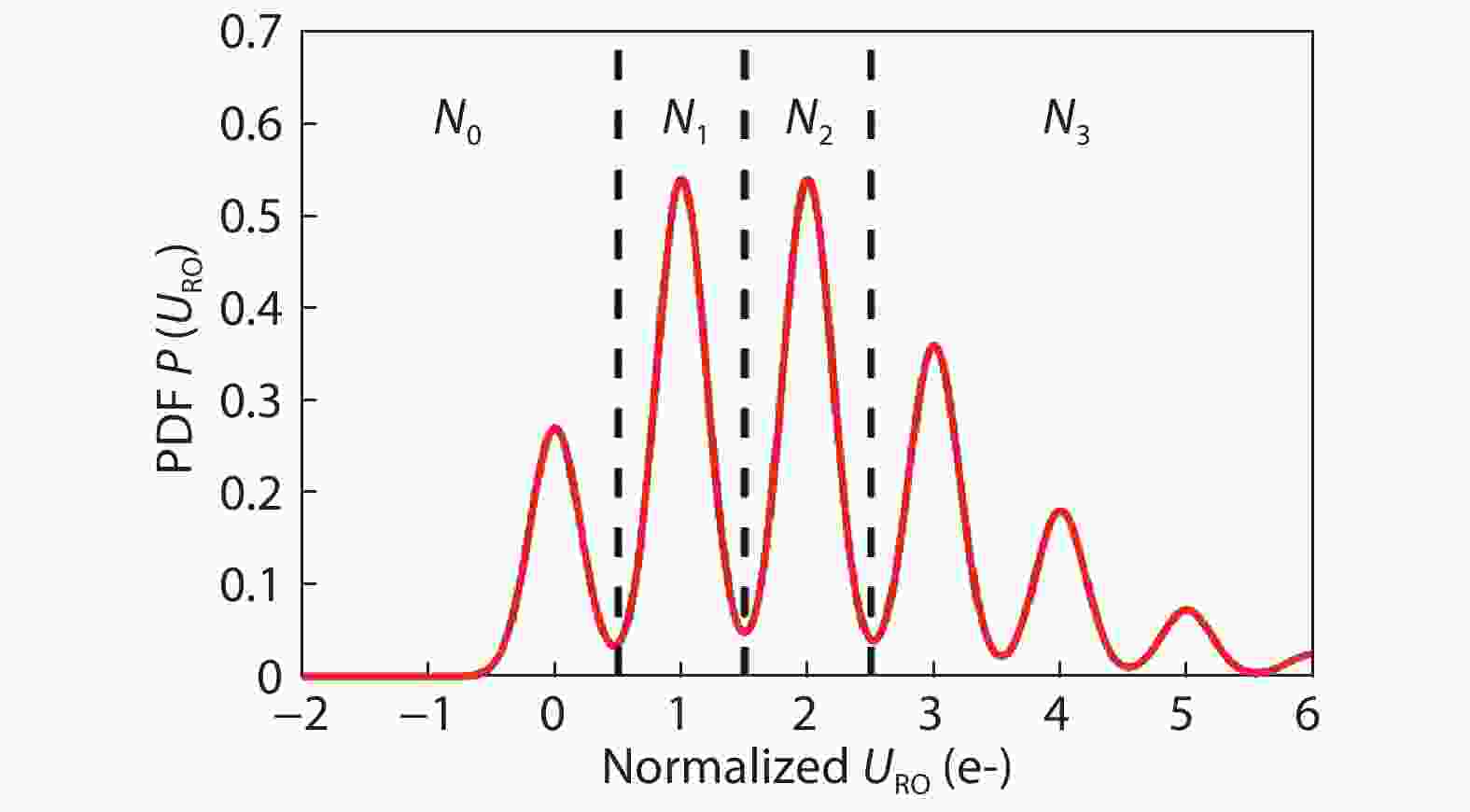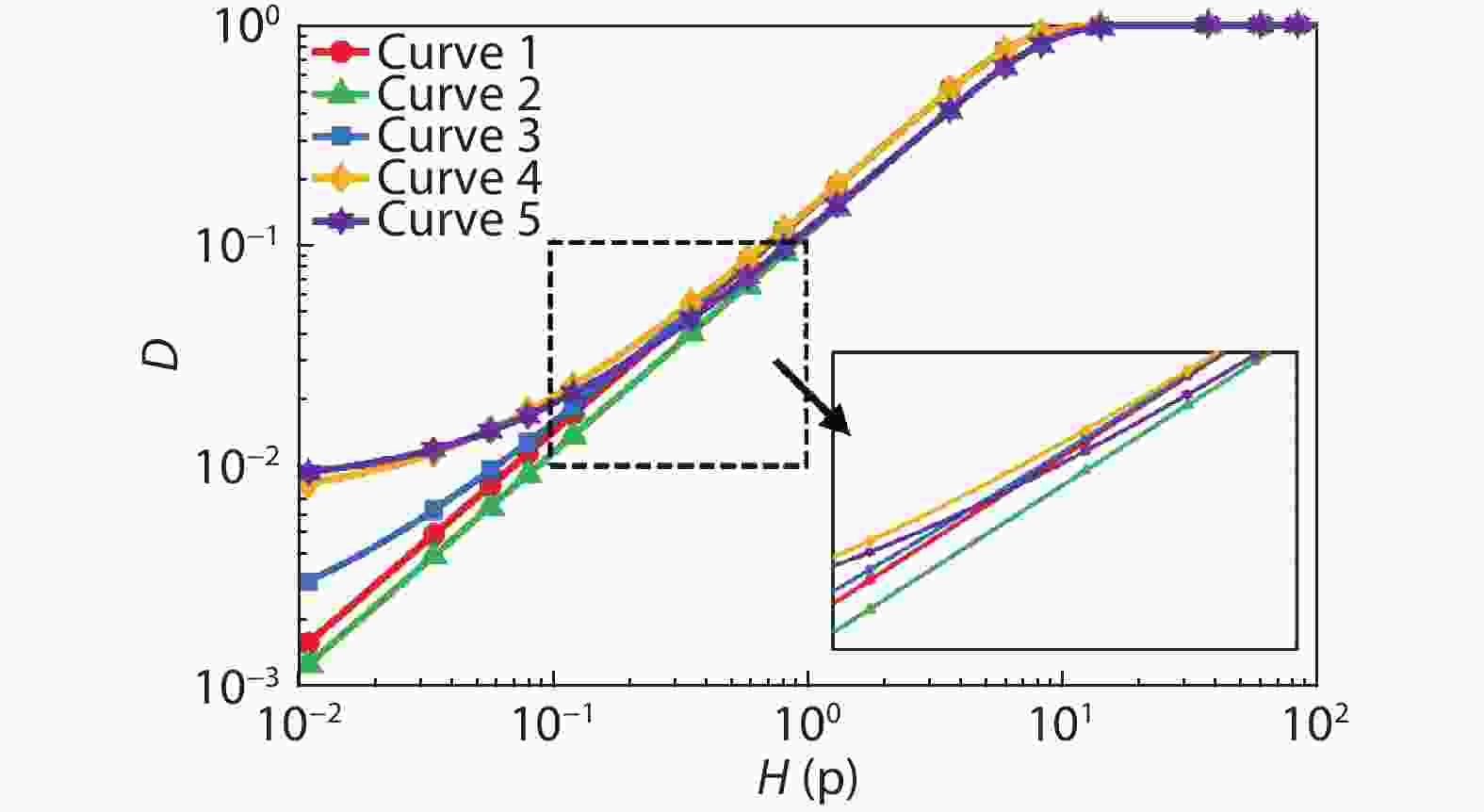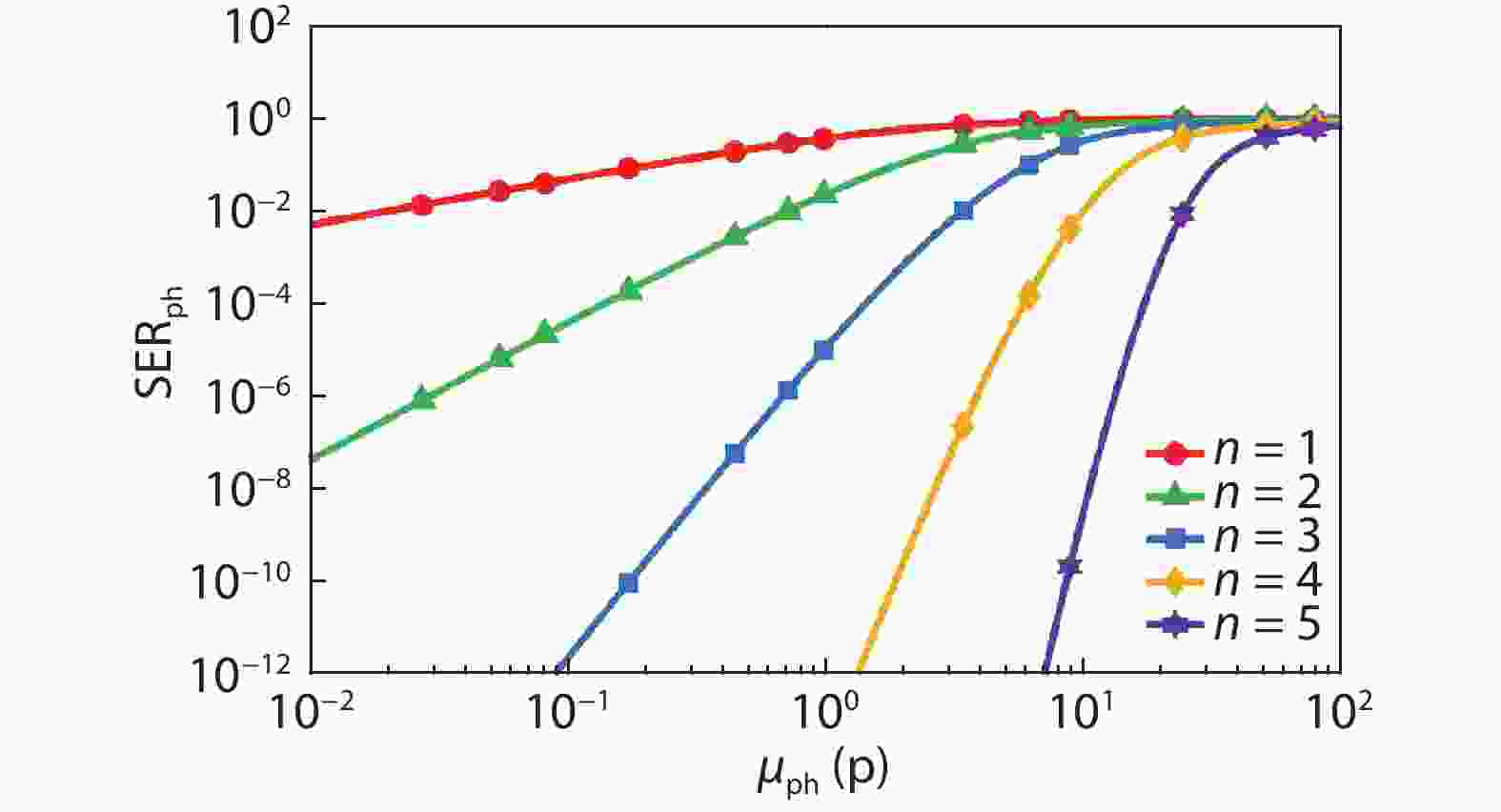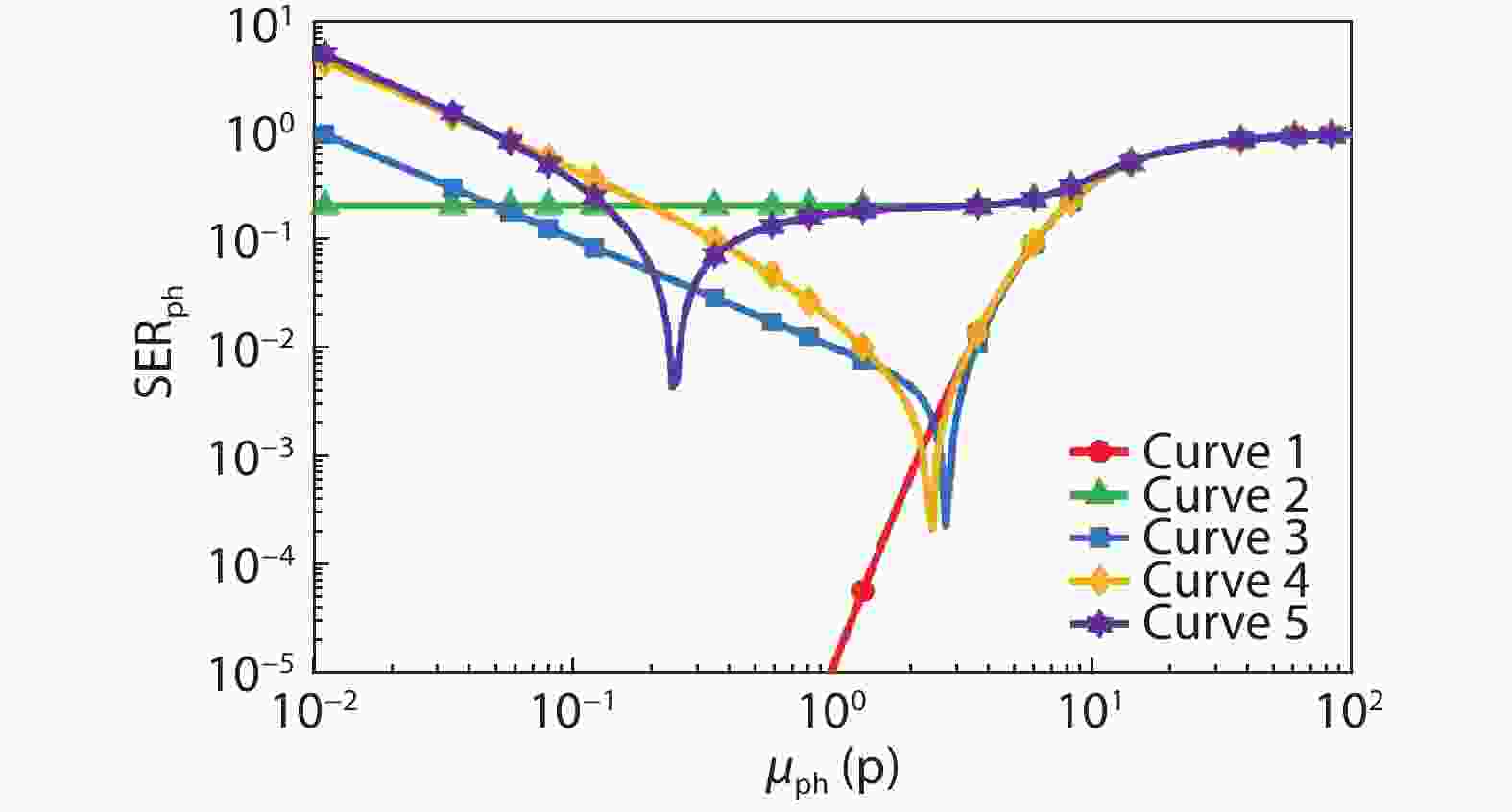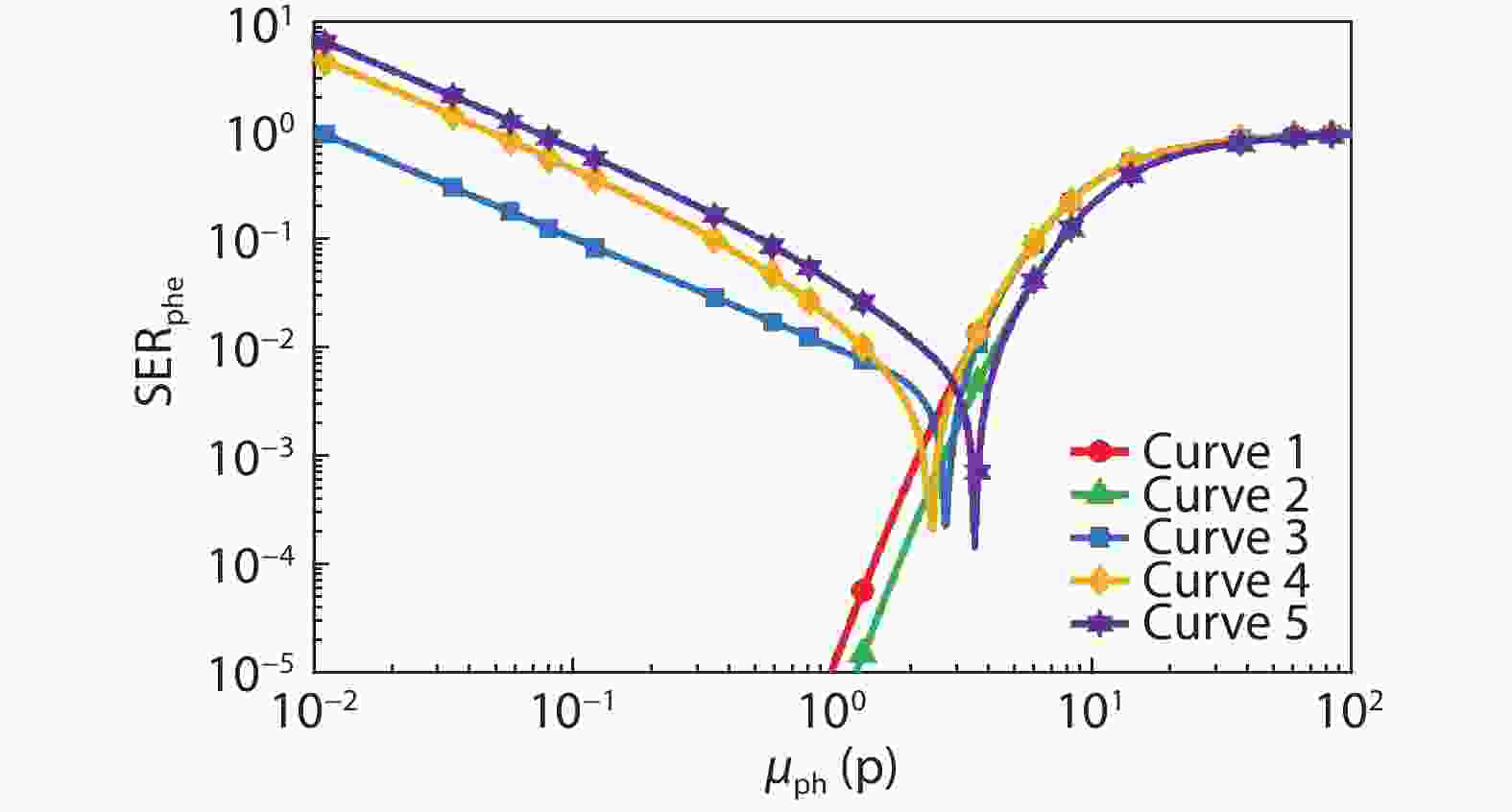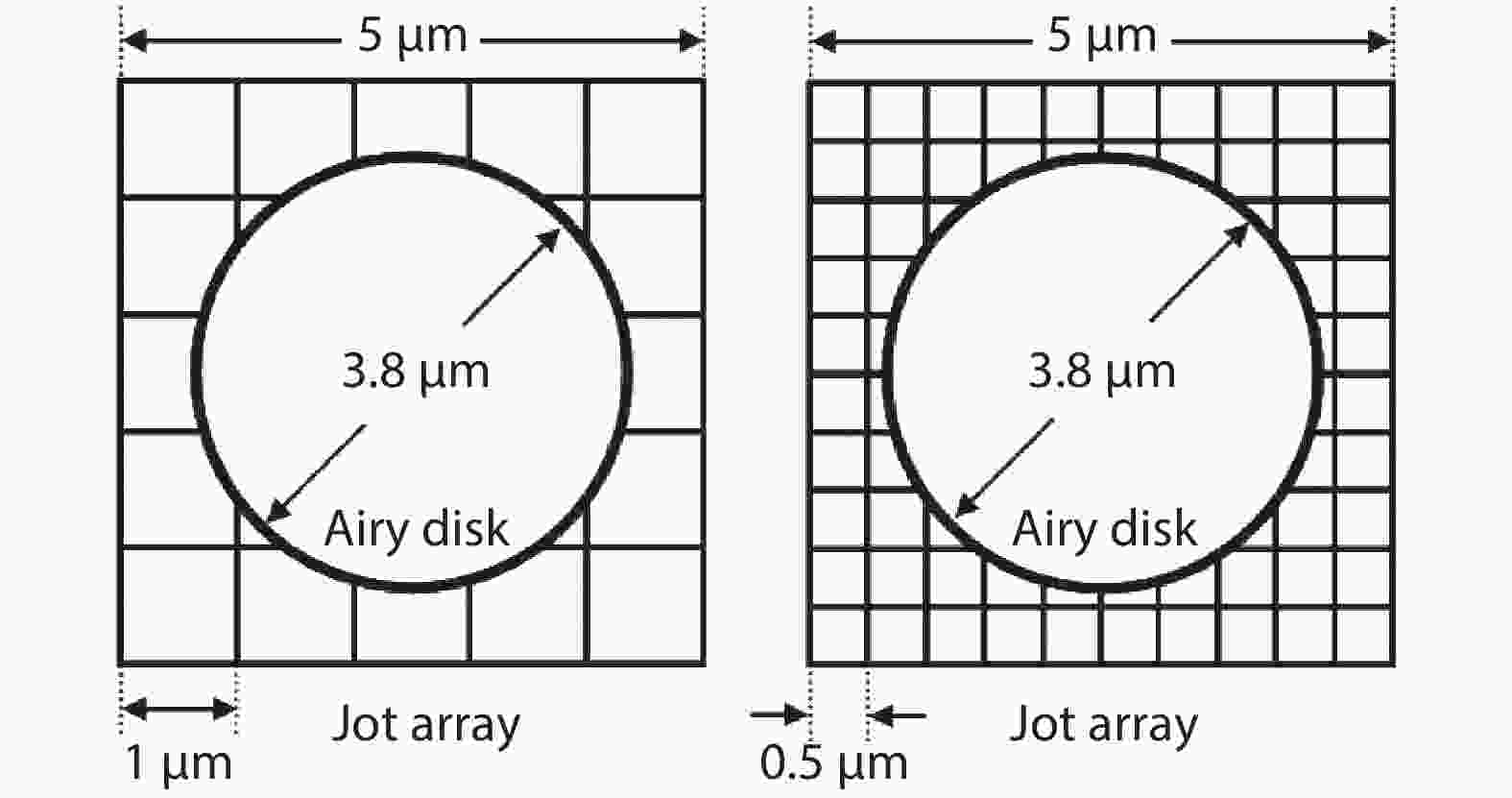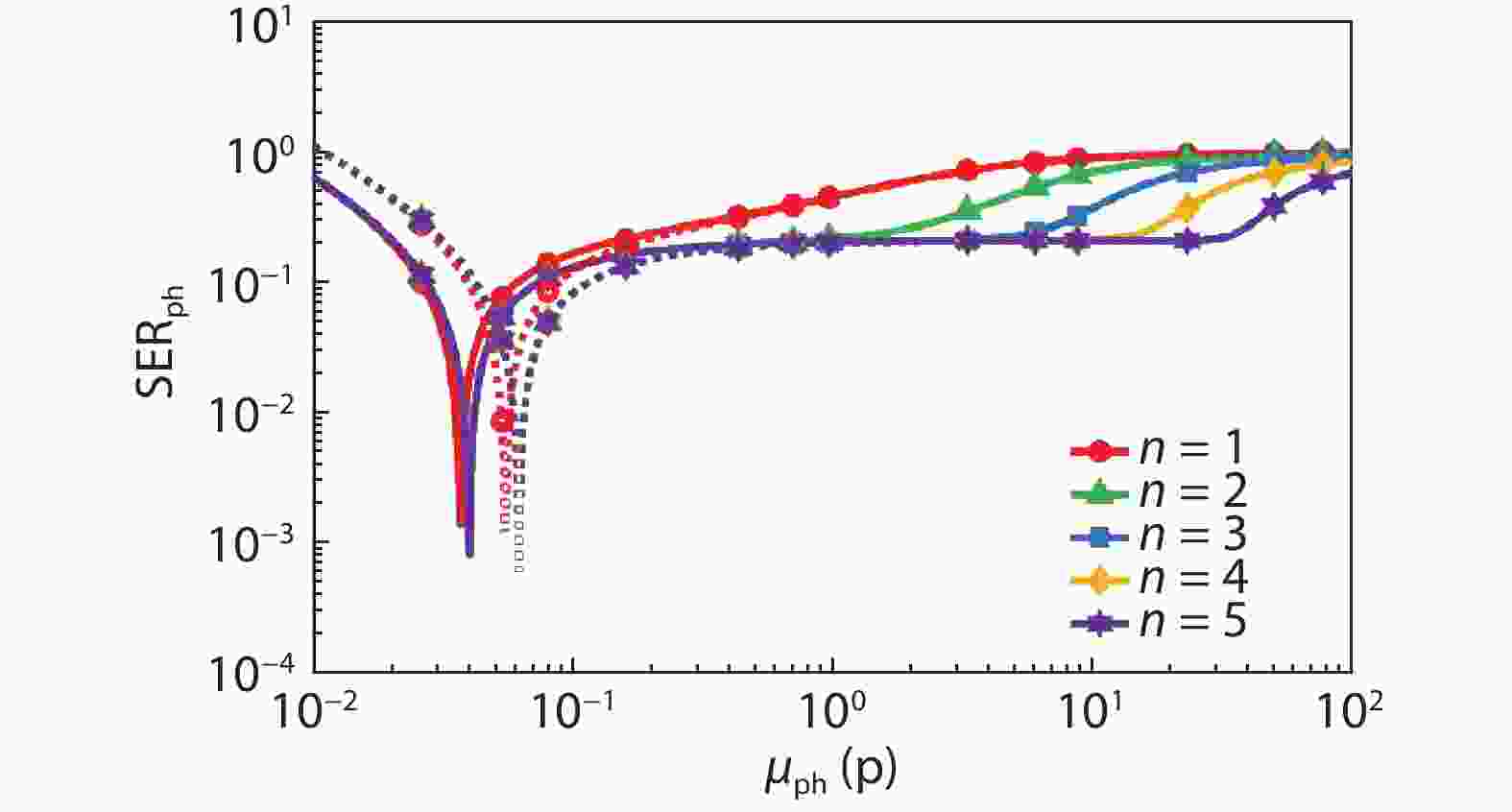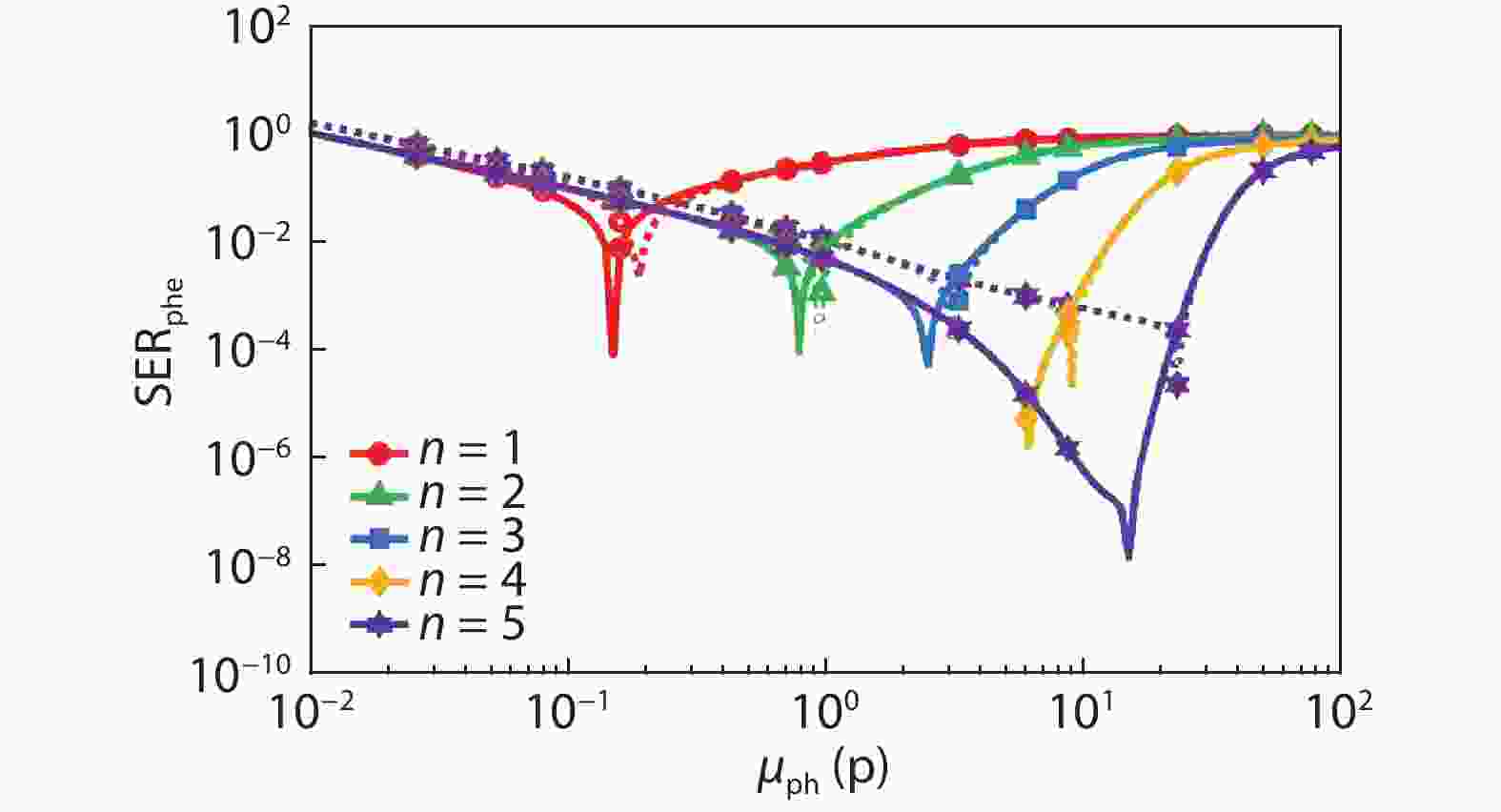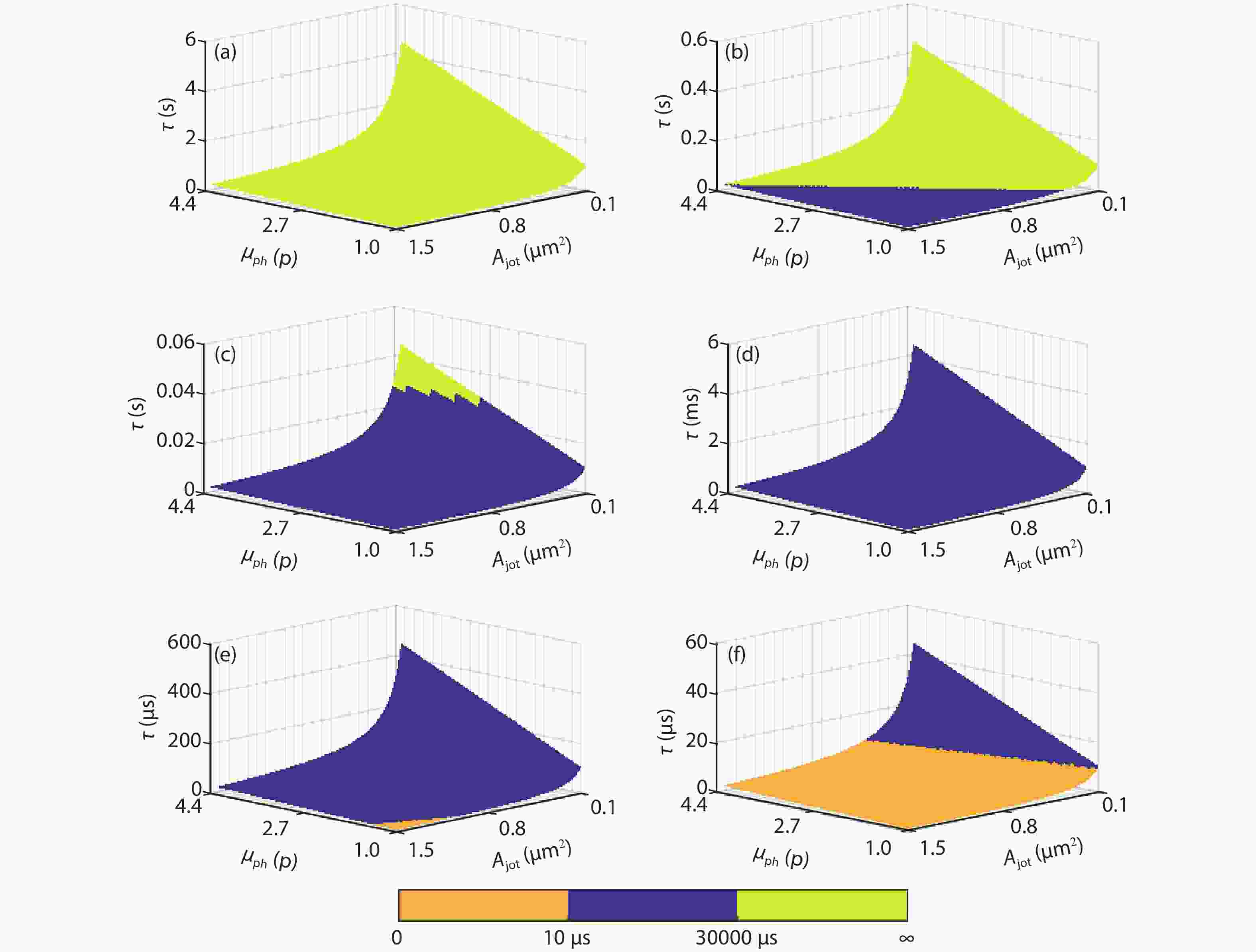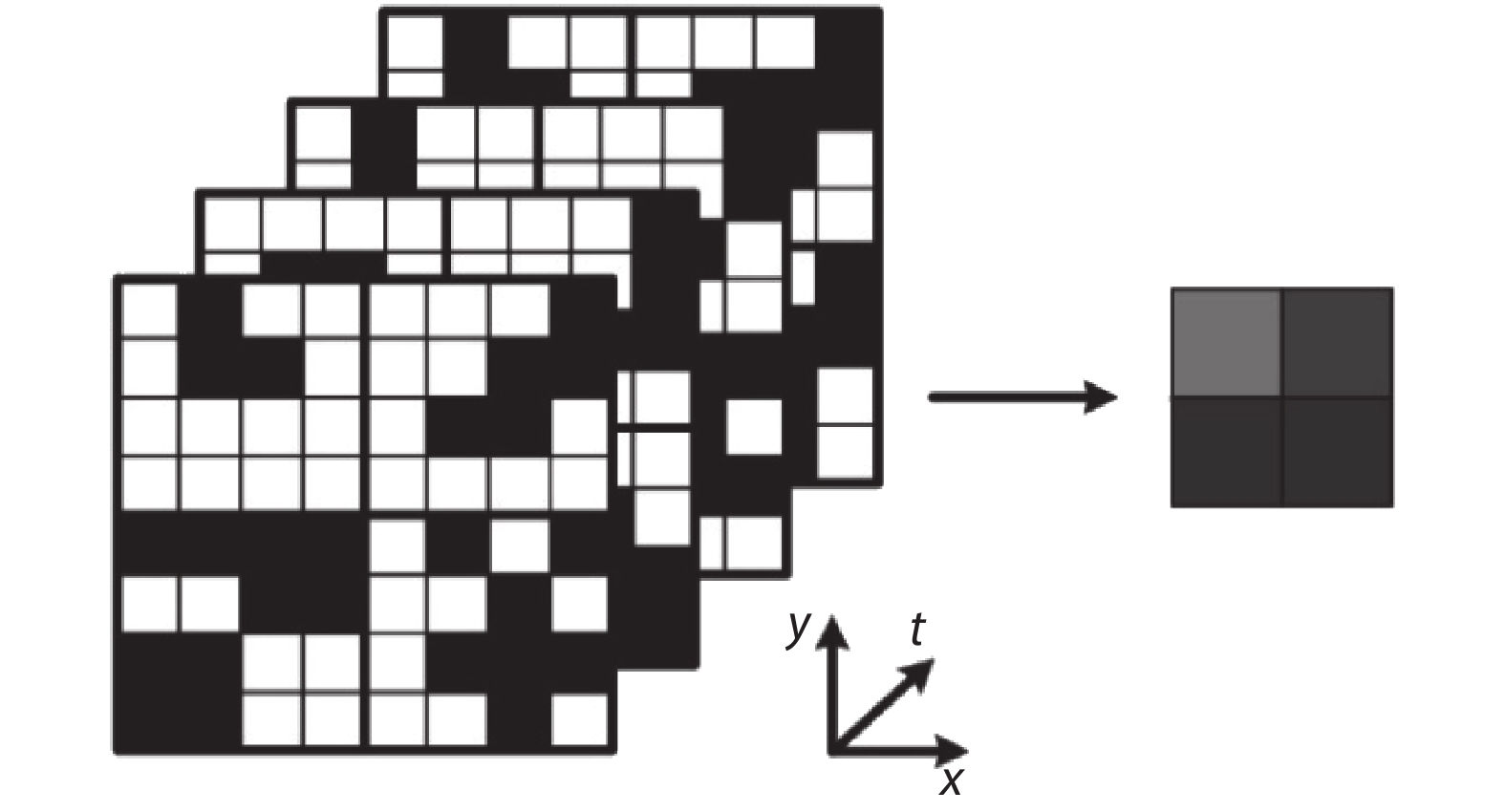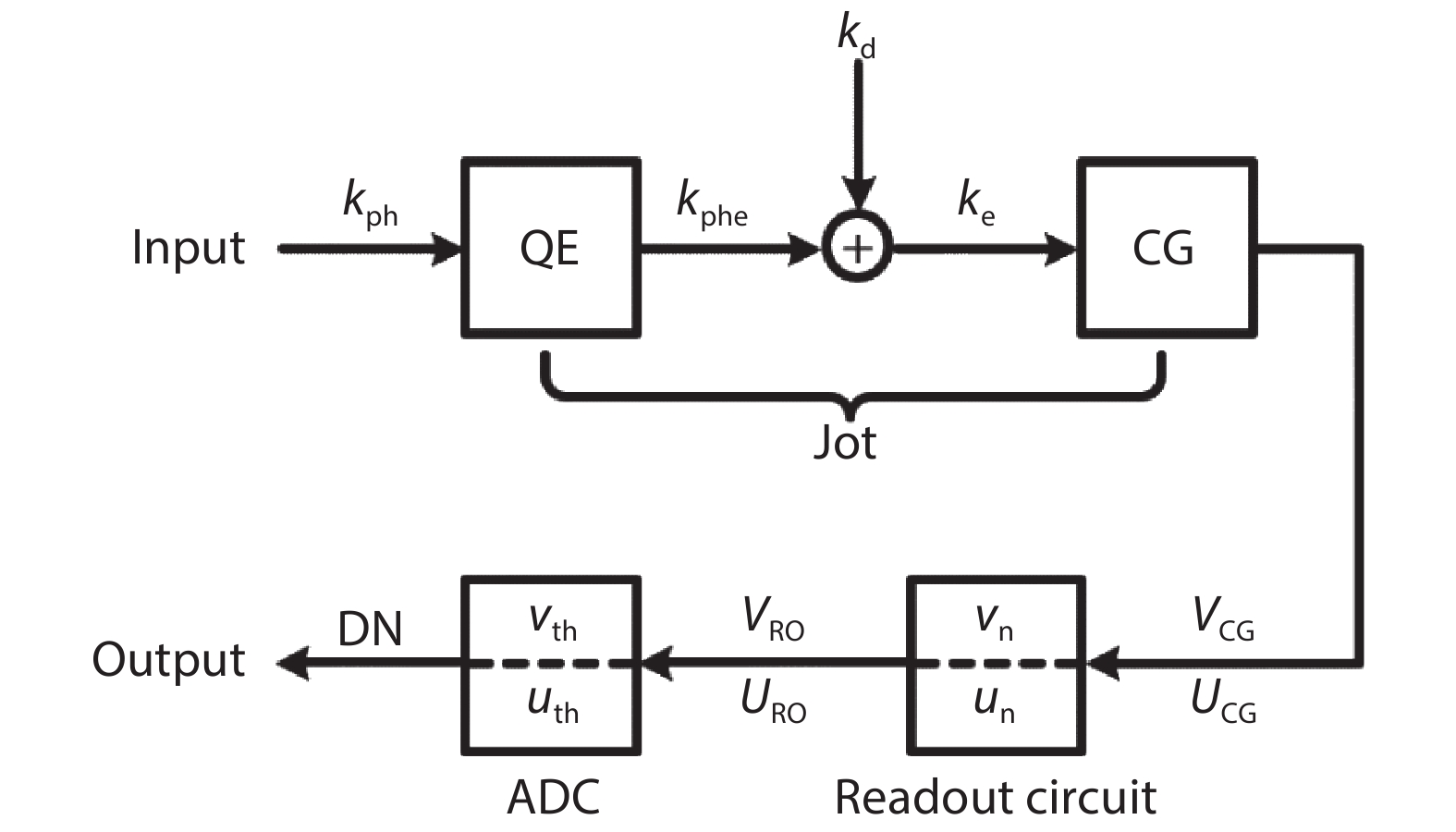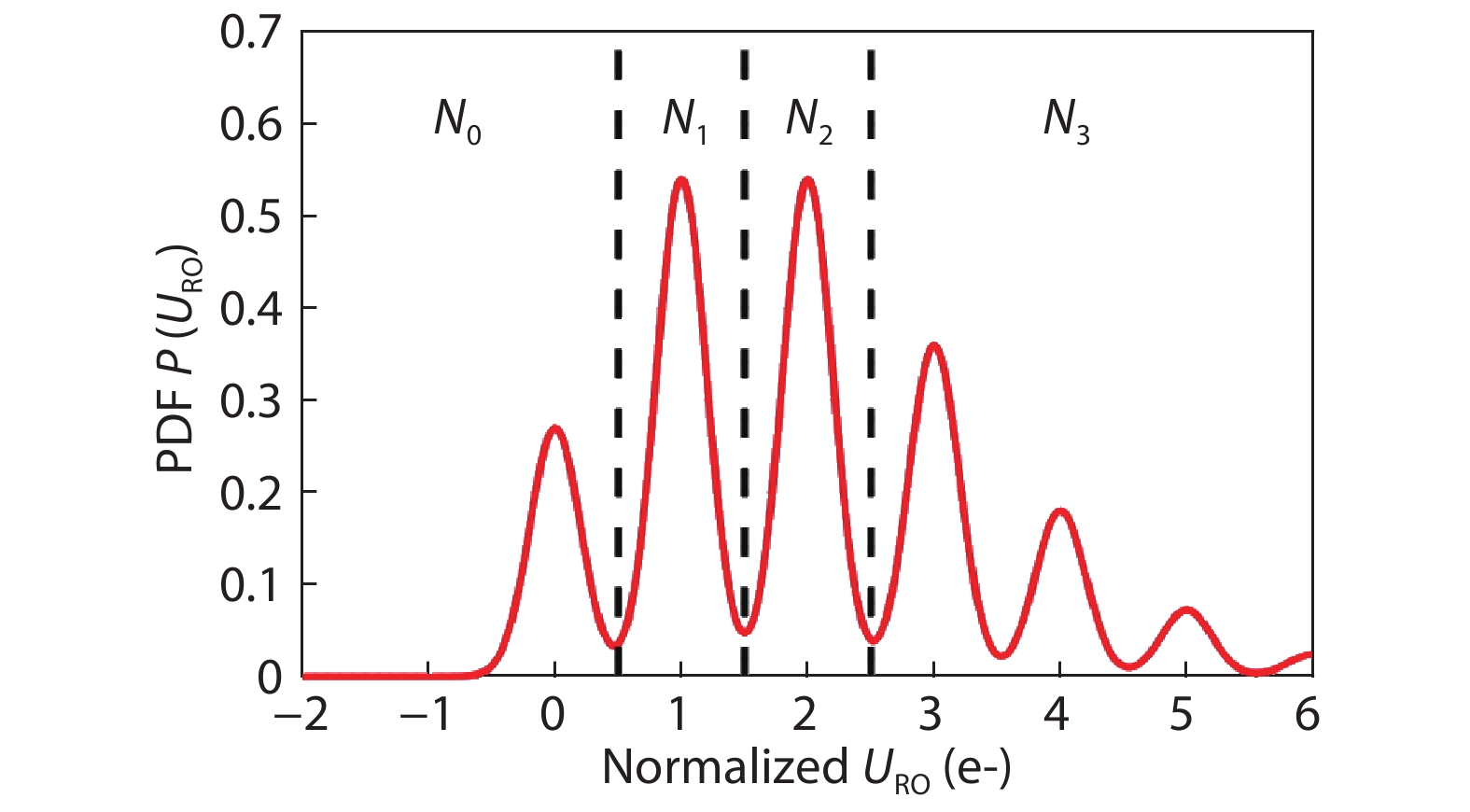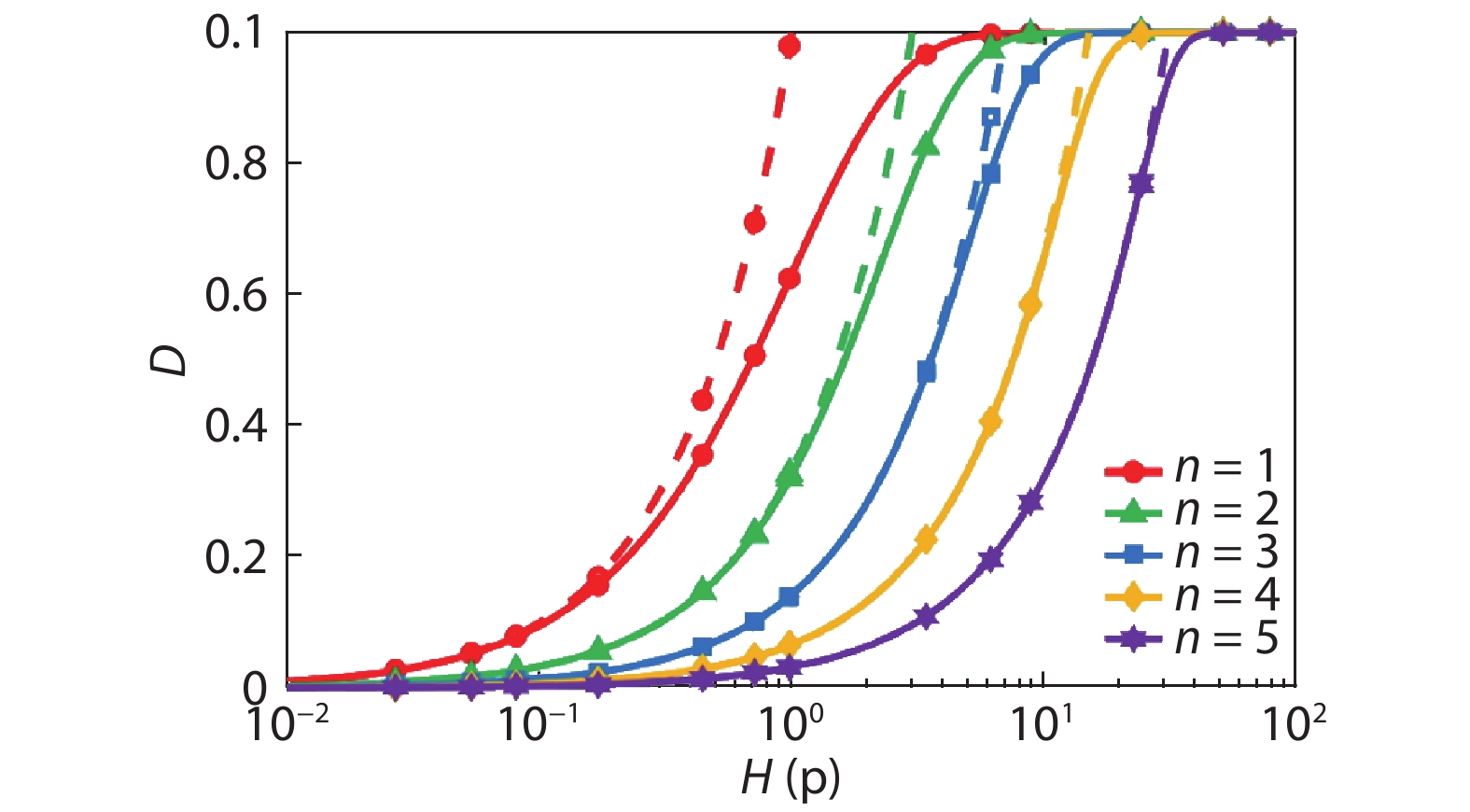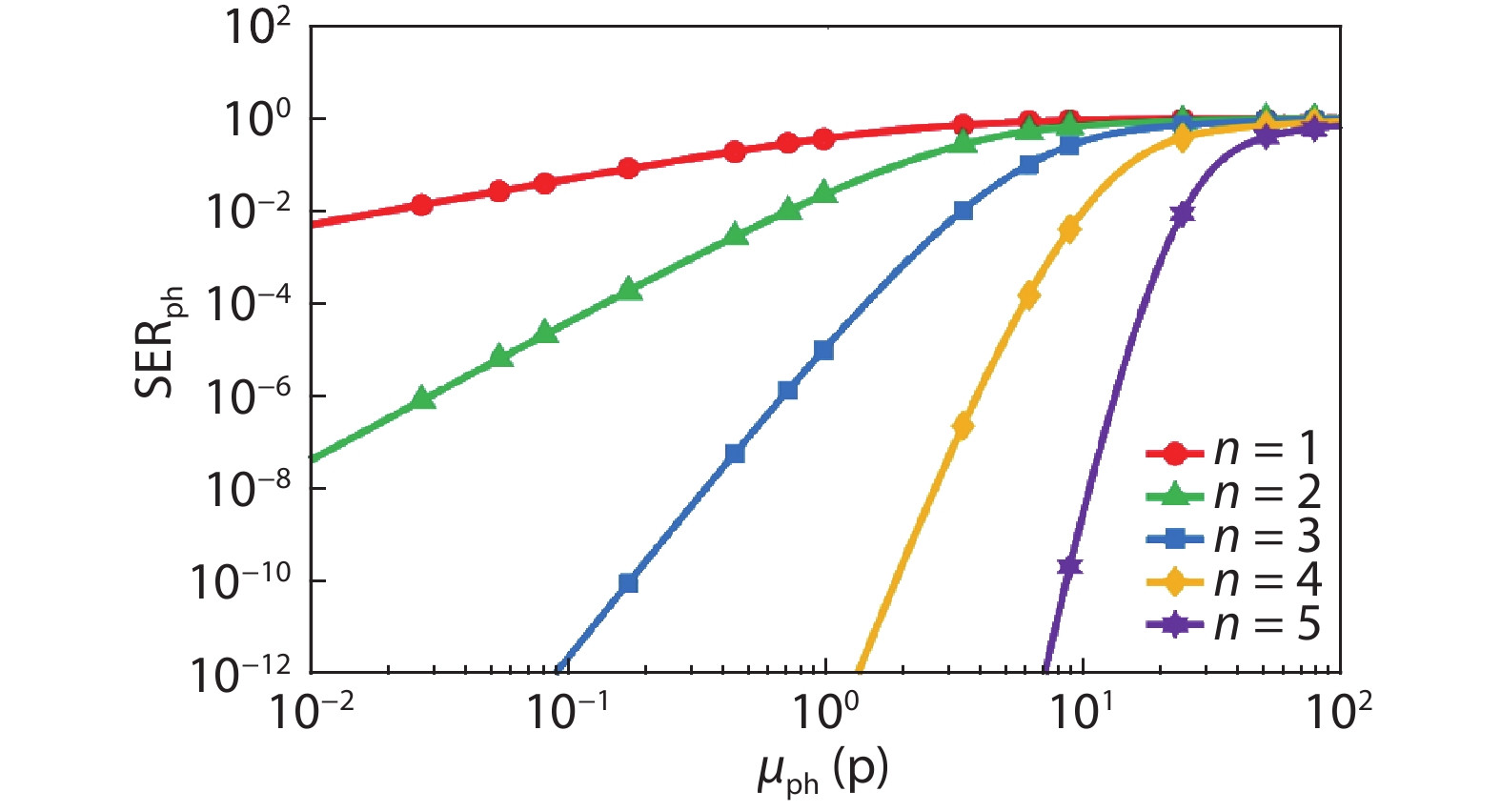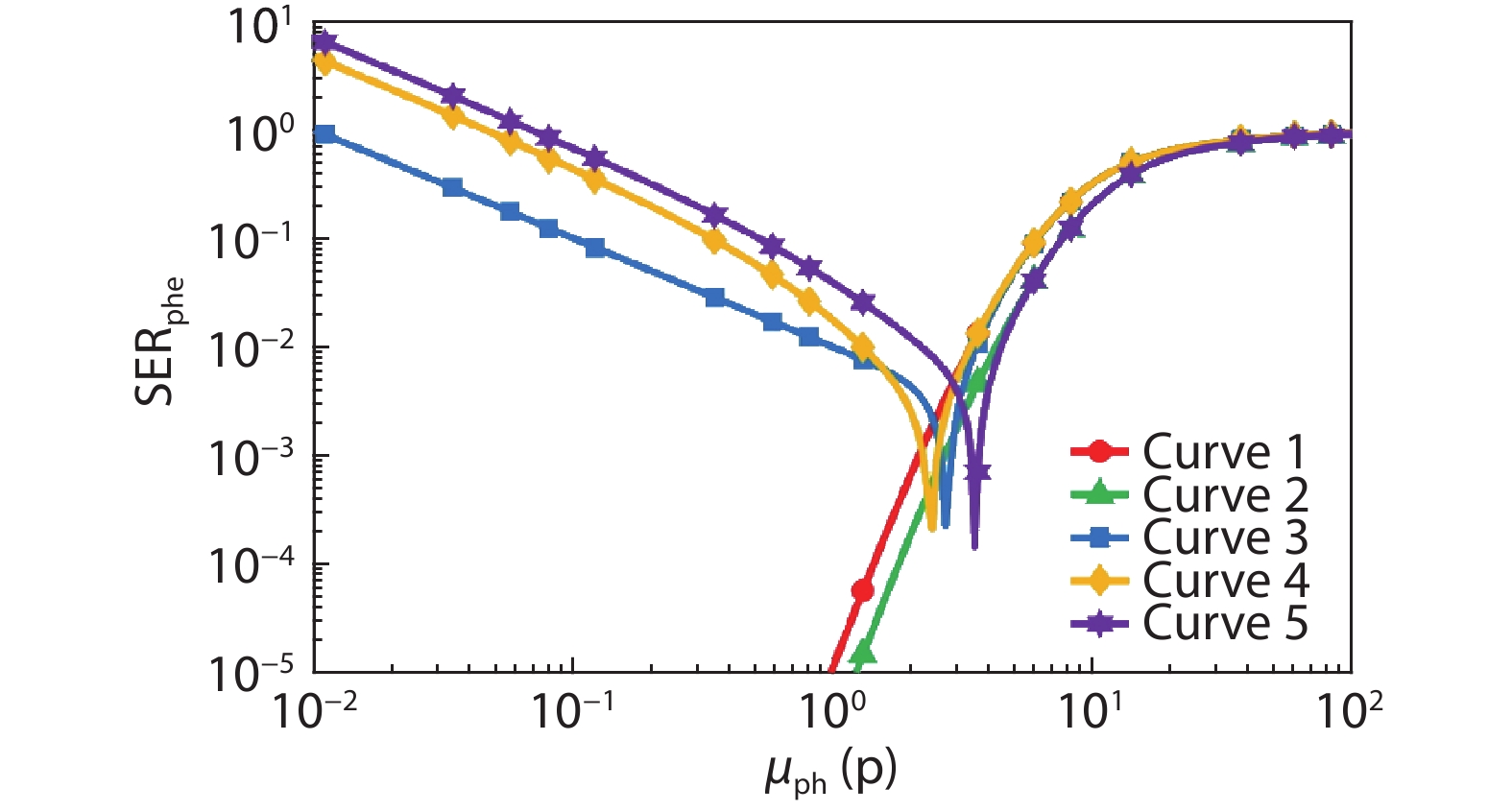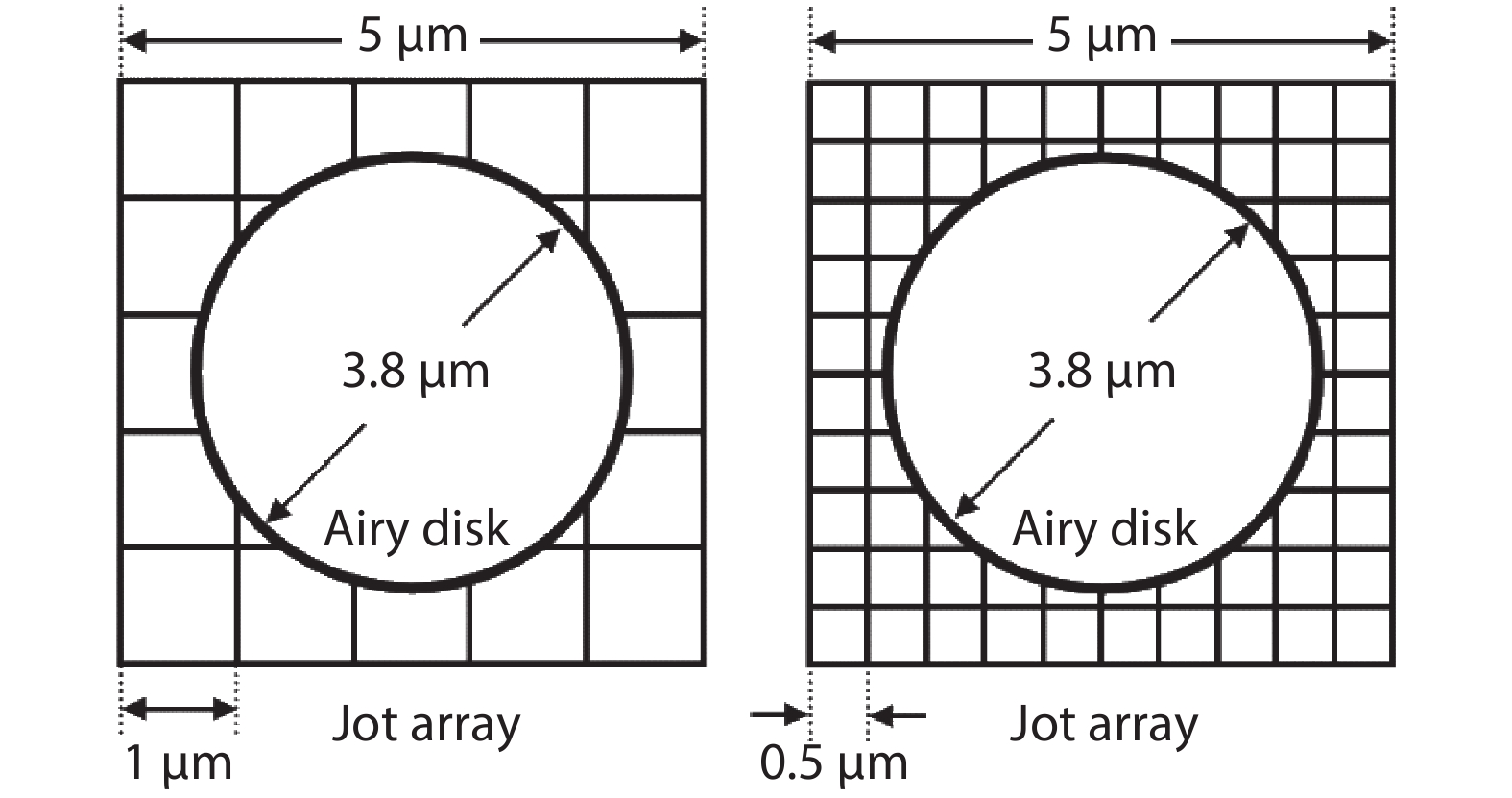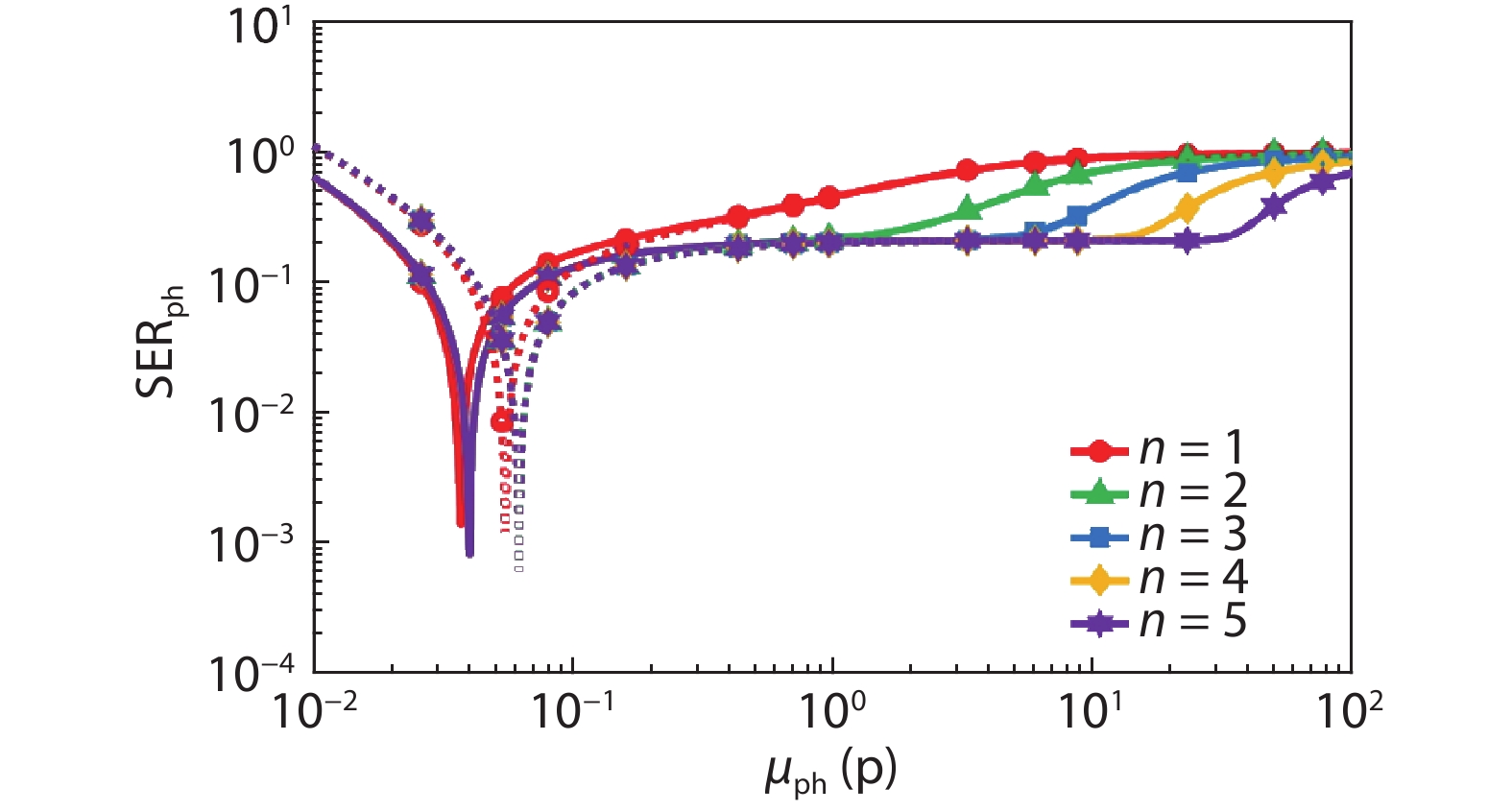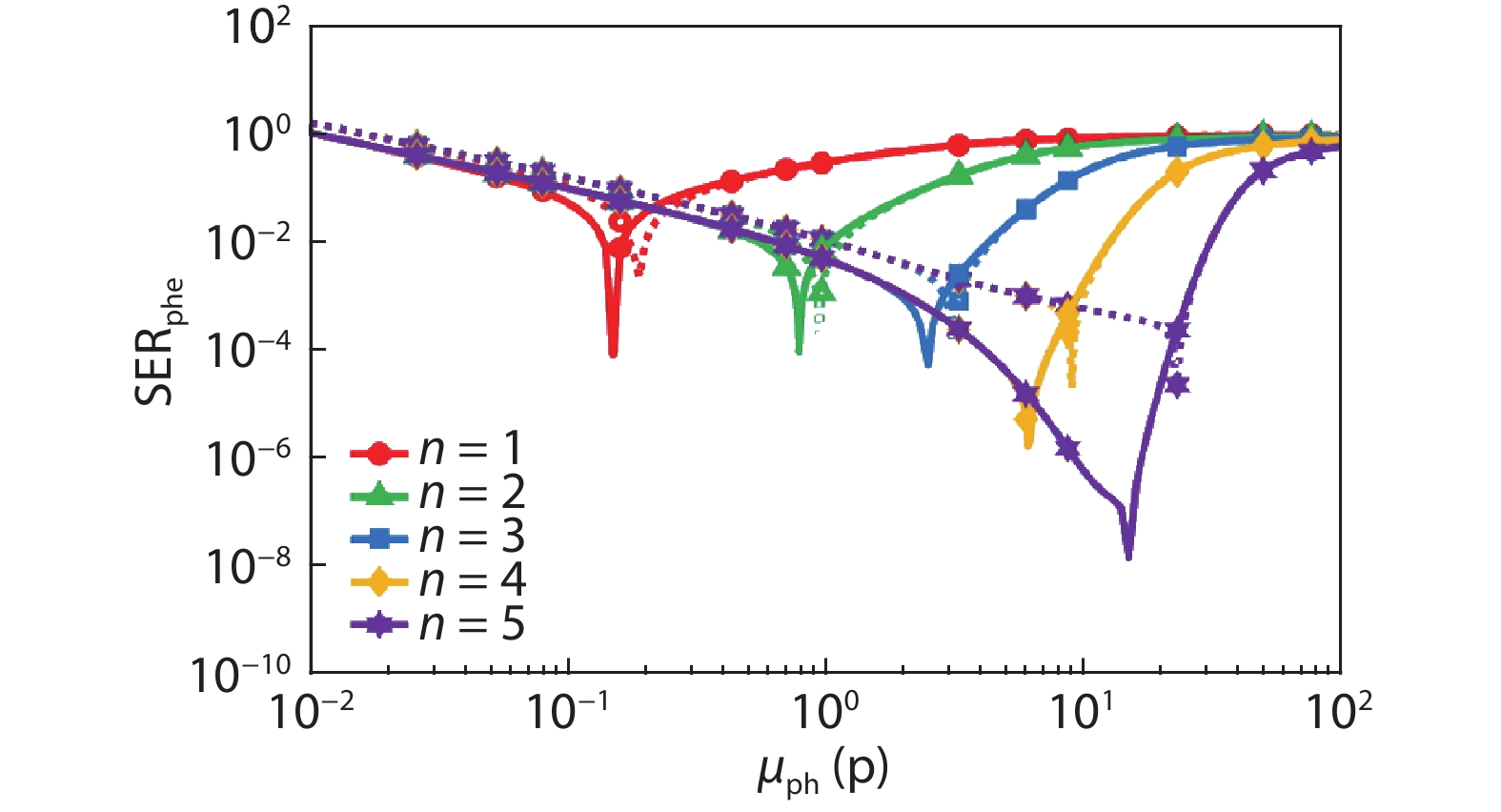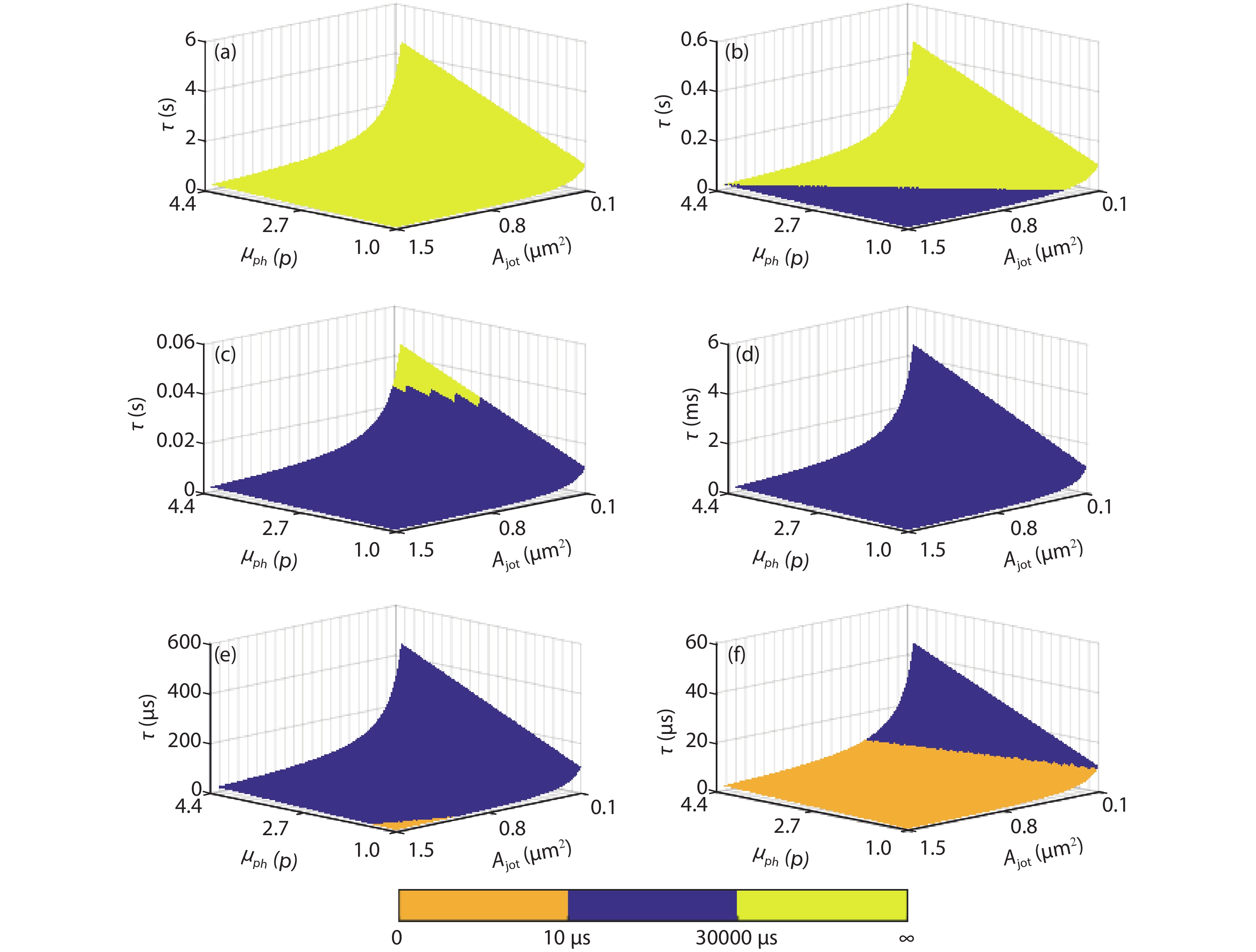| Citation: |
Bowen Liu, Jiangtao Xu. Modeling the photon counting and photoelectron counting characteristics of quanta image sensors[J]. Journal of Semiconductors, 2021, 42(6): 062301. doi: 10.1088/1674-4926/42/6/062301
B W Liu, J T Xu, Modeling the photon counting and photoelectron counting characteristics of quanta image sensors[J]. J. Semicond., 2021, 42(6): 062301. doi: 10.1088/1674-4926/42/6/062301.
Export: BibTex EndNote
|
Modeling the photon counting and photoelectron counting characteristics of quanta image sensors
doi: 10.1088/1674-4926/42/6/062301
More Information-
Abstract
A signal chain model of single-bit and multi-bit quanta image sensors (QISs) is established. Based on the proposed model, the photoresponse characteristics and signal error rates of QISs are investigated, and the effects of bit depth, quantum efficiency, dark current, and read noise on them are analyzed. When the signal error rates towards photons and photoelectrons counting are lower than 0.01, the high accuracy photon and photoelectron counting exposure ranges are determined. Furthermore, an optimization method of integration time to ensure that the QIS works in these high accuracy exposure ranges is presented. The trade-offs between pixel area, the mean value of incident photons, and integration time under different illuminance level are analyzed. For the 3-bit QIS with 0.16 e-/s dark current and 0.21 e- r.m.s. read noise, when the illuminance level and pixel area are 1 lux and 1.21 μm2, or 10 000 lux and 0.21 μm2, the recommended integration time is 8.8 to 30 ms, or 10 to 21.3 μs, respectively. The proposed method can guide the design and operation of single-bit and multi-bit QISs. -
References
[1] Fossum E, Ma J J, Masoodian S, et al. The quanta image sensor: Every photon counts. Sensors, 2016, 16, 1260 doi: 10.3390/s16081260[2] Fossum E R. CMOS image sensors: Electronic camera-on-a-chip. IEEE Trans Electron Devices, 1997, 44, 1689 doi: 10.1109/16.628824[3] Fossum E R, Hondongwa D B. A review of the pinned photodiode for CCD and CMOS image sensors. IEEE J Electron Devices Soc, 2014, 2, 33 doi: 10.1109/JEDS.2014.2306412[4] Fossum E R. What to do with sub-diffraction-limit (SDL) pixels – A proposal for a gigapixel digital film sensor (DFS). Proceedings of Workshop on Charge-Coupled Devices and Advanced Image Sensors, 2005, 214[5] Fossum E R. The quanta image sensor (QIS): Concepts and challenges. Proceedings of Imaging Systems and Applications, 2011, JTuE1[6] Teranishi N. Toward photon counting image sensors. Proceedings of Imaging Systems and Applications, 2011, IMA1[7] Teranishi N. Required conditions for photon-counting image sensors. IEEE Trans Electron Devices, 2012, 59, 2199 doi: 10.1109/TED.2012.2200487[8] Fossum E R. Application of photon statistics to the quanta image sensor. Proceedings of International Image Sensors Workshop, 2013, S9-1[9] Fossum E R. Modeling the performance of single-bit and multi-bit quanta image sensors. IEEE J Electron Devices Soc, 2013, 1, 166 doi: 10.1109/JEDS.2013.2284054[10] Fossum E R. Photon counting error rates in single-bit and multi-bit quanta image sensors. IEEE J Electron Devices Soc, 2016, 4, 136 doi: 10.1109/JEDS.2016.2536722[11] Deng W, Starkey D, Ma J, et al. Modelling measured 1/f noise in quanta image sensor (QIS). Proceedings of International Image Sensors Workshop, 2019, R07[12] Ma J J, Fossum E R. A pump-gate jot device with high conversion gain for a Quanta image sensor. IEEE J Electron Devices Soc, 2015, 3, 73 doi: 10.1109/JEDS.2015.2390491[13] Ma J J, Starkey D, Rao A R, et al. Characterization of quanta image sensor pump-gate jots with deep sub-electron read noise. IEEE J Electron Devices Soc, 2015, 3, 472 doi: 10.1109/JEDS.2015.2480767[14] Masoodian S, Rao A R, Ma J J, et al. A 2.5 pJ/b binary image sensor as a pathfinder for quanta image sensors. IEEE Trans Electron Devices, 2016, 63, 100 doi: 10.1109/TED.2015.2457418[15] Masoodian S, Ma J, Starkey D, et al. A 1Mjot 1040fps 0.22e- r. m. s. stacked BSI quanta image sensor with cluster-parallel readout. Proceedings of International Image Sensors Workshop, 2017, R19[16] Starkey D, Deng W, Ma J, et al. Quanta imaging sensors: Achieving single-photon counting without avalanche gain. SPIE Defense + Security. Proceedings of Micro- and Nanotechnology Sensors, Systems, and Applications X, 2018, 1063, 106391Q[17] Dutton N, Parmesan L, Gnecchi S, et al. Oversampled ITOF imaging techniques using SPAD-based quanta image sensors. Proceedings of International Image Sensors Workshop, 2015, S6-4[18] Ma J J, Anzagira L, Fossum E R. A 1 μm-pitch quanta image sensor jot device with shared readout. IEEE J Electron Devices Soc, 2016, 4, 83 doi: 10.1109/JEDS.2016.2516026[19] Jun O. Smart CMOS image sensors and applications. CRC Press, 2007, 181 -
Proportional views






 DownLoad:
DownLoad:
